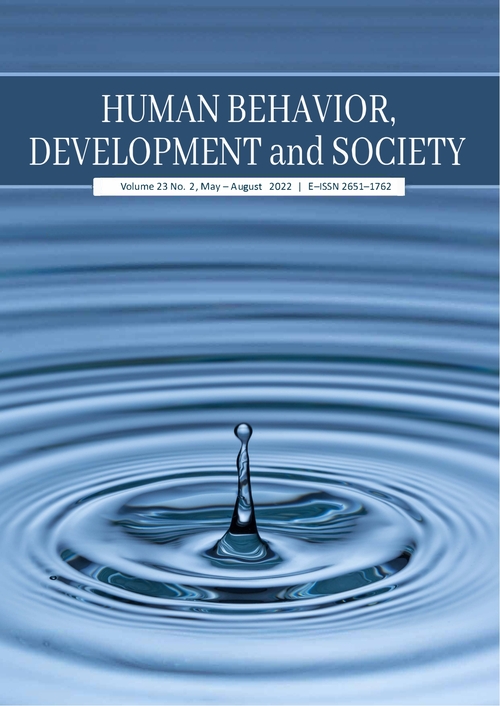Nasopharyngeal Cancer in Malaysia: Perceived Severity, Susceptibility, and Barriers in Risk Messages
Main Article Content
Abstract
Perceived severity and susceptibility of breast and lung cancers have been extensively studied but perceptions of the threat posed by nasopharyngeal cancer (NPC) is little understood. In this study perceptions were examined regarding the severity and susceptibility to NPC and barriers in taking preventive measures before and after reading specific cancer risk messages. The sample consisted of 65 participants living in the Kuching and Samarahan divisions of Sarawak, Malaysia who had not been diagnosed with NPC. Participants were interviewed about their perceived severity, susceptibility, and barriers towards the cancer before and after reading the NPC pamphlet, produced by the Ministry of Health, Malaysia. A total of 87.7% of participants perceived NPC as a severe disease, as it connotes death, scary symptoms, and disruption to the quality of life. Only 27.7% of participants believed that they were at risk of contracting NPC after reading the pamphlet. The common perceived risk factors were smoking, polluted environment, preserved food, and high NPC incidences in Malaysia. As for perceived barriers, 19% participants reported that living a healthy lifestyle would be hard, while 31% were fearful of screening. The study showed that the risk messages provided participants with more specific and accurate information on NPC.
Article Details

This work is licensed under a Creative Commons Attribution-NonCommercial-NoDerivatives 4.0 International License.
Copyright: Asia-Pacific International University reserve exclusive rights to publish, reproduce and distribute the manuscript and all contents therein.
References
Adams, L. M., Stuewig, J. B., Tangney, J. P., & Kasdan, T. B. (2014). Perceived susceptibility to AIDS predicts subsequent HIV risk: A longitudinal evaluation of jail inmates. Journal of Behavioral Medical, 37(3), 511–523.
Armstrong, R., Armstrong, M., & Lye, M. (2000). Social impact of nasopharyngeal carcinoma on Chinese households in Selangor, Malaysia. Singapore Medical Journal, 41(12), 582–587.
Arpan, L. M., Lee, Y. S., & Wang, Z. (2017). Integrating self-affirmation with health risk messages: effects on message evaluation and response. Health communication, 32(2), 189–199.
Austin, L. T., Ahmad, F., McNally, M. J., & Stewart, D. E. (2002). Breast and cervical cancer screening in Hispanic women: a literature review using the health belief model. Women's Health Issues, 12(3), 122–128.
Aziz, A., Ramli, R. R., Mohamad, I., & Bhavaraju, V. M. K. (2017). Young nasopharyngeal carcinoma: a review of an 8-year experience in the East Coast Malaysia Hospital. The Egyptian Journal of Otolaryngology, 33(2), 490–494.
Becker, M. H., Maiman, L. A., Kirscht, J. P., Haefner, D. P., & Drachman, R. H. (1977). The health belief model and prediction of dietary compliance: A field experiment. Journal of Health and Social Behavior, 348–366.
Devi, B. C., Pisani, P., Tang, T. S., & Parkin, D. M. (2004). High incidence of nasopharyngeal carcinoma in native people of Sarawak, Borneo Island. Cancer Epidemiology and Prevention Biomarkers, 13(3), 482–486.
Fles, R., Bos, A., Rachmawati, D., Waliyanti, E., Tan, I., Haryana, S., Schmidt, M., & Dewi, F. (2017). The role of Indonesian patients’ health behaviors in delaying the diagnosis of nasopharyngeal carcinoma. BMC Public Health, 17(1), 1–8.
Hingson, R. W., Strunin, L., Berlin, B. M., & Heeren, T. (1990). Beliefs about AIDS, use of alcohol and drugs, and unprotected sex among Massachusetts adolescents. American Journal of Public Health, 80(3), 295–299.
Hollister, M. C., & Anema, M. G. (2004). Health behavior models and oral health: a review. American Dental Hygienists' Association, 78(3), 1–6.
Hounton, S. H., Carabin, H., & Henderson, N. J. (2005). Towards an understanding of barriers to condom use in rural Benin using the Health Belief Model: A cross sectional survey. BMC Public Health, 5(1), 1–8.
James, A. S., Campbell, M. K., & Hudson, M. A. (2002). Perceived barriers and benefits to colon cancer screening among African Americans in North Carolina: How does perception relate to screening behavior? Cancer Epidemiology and Prevention Biomarkers, 11(6), 529–534.
Jones, R. M., Devers, K. J., Kuzel, A. J., & Woolf, S. H. (2010). Patient-reported barriers to colorectal cancer screening: a mixed-methods analysis. American Journal of Preventive Medicine, 38(5), 508–516.
Manan, A. A., Basri, H., Kaur, N., Rahman, S. Z. A., Amir, P. N., Ali, N., Raman, S., Bahtiar, B., Ramdzuan, N. S. M., Soffian, S. S. S., Othman, R., & Aziz, A. A. (2019). Malaysia National Cancer Registry Report 2012–2016 [Report]. Ministry of Health Malaysia.
McCall, L. A., & Ginis, K. A. M. (2004). The effects of message framing on exercise adherence and health beliefs among patients in a cardiac rehabilitation program. Journal of Applied Biobehavioral Research, 9(2), 122–135.
McLachlan, S.-A., Clements, A., & Austoker, J. (2012). Patients’ experiences and reported barriers to colonoscopy in the screening context: A systematic review of the literature. Patient Education and Counseling, 86(2), 137–146.
Prasad, U., Pathmanathan, R., Sam, C., Rampal, L., & Singh, J. (1989). Early diagnosis of nasopharyngeal carcinoma: a multi-pronged approach. In D. V. Ablashi, A. Faggioni, G. R. F. Krueger, J. S. Pagano, & G. R. Pearson (Eds), Epstein-Barr Virus and Human Disease (pp. 385–389). Springer.
Rosenstock, I. M., Strecher, V. J., & Becker, M. H. (1988). Social learning theory and the health belief model. Health Education Quarterly, 15(2), 175–183.
Thomas, V. N., Saleem, T. & Abraham, R. (2005). Barriers to effective uptake of cancer screening among Black and minority ethnic groups. International Journal of Palliative Nursing, 11(11), 562–571.
Ting, S. H., Ho, J. Y., & Podin, Y. (2021, January 9). Expressions of perceived severity towards nasopharyngeal cancer. Proceedings of the First International Conference on Government Education Management and Tourism (ICoGEMT), Bandung, Indonesia. https://ir.unimas.my/id/eprint/35397/1/Expressions%20of%20 Perceived%20Severity%20towards%20Nasopharyngeal%20Cancer.pdf
Ting, S., Jerome, C., Podin, Y., & Wan Ahmad, S. (2018). Evaluating nose and throat cancer risk: Number sense and taboos on ill-health. Proceedings of 2nd International Conference on Social and Economic Development (ICSED2),
Zheng, Y., Tuppin, P., Hubert, A., Jeannel, D., Pan, Y., Zeng, Y., & De Thé, G. (1994). Environmental and dietary risk factors for nasopharyngeal carcinoma: a case-control study in Zangwu County, Guangxi, China. British Journal of Cancer, 69(3), 508–514.


